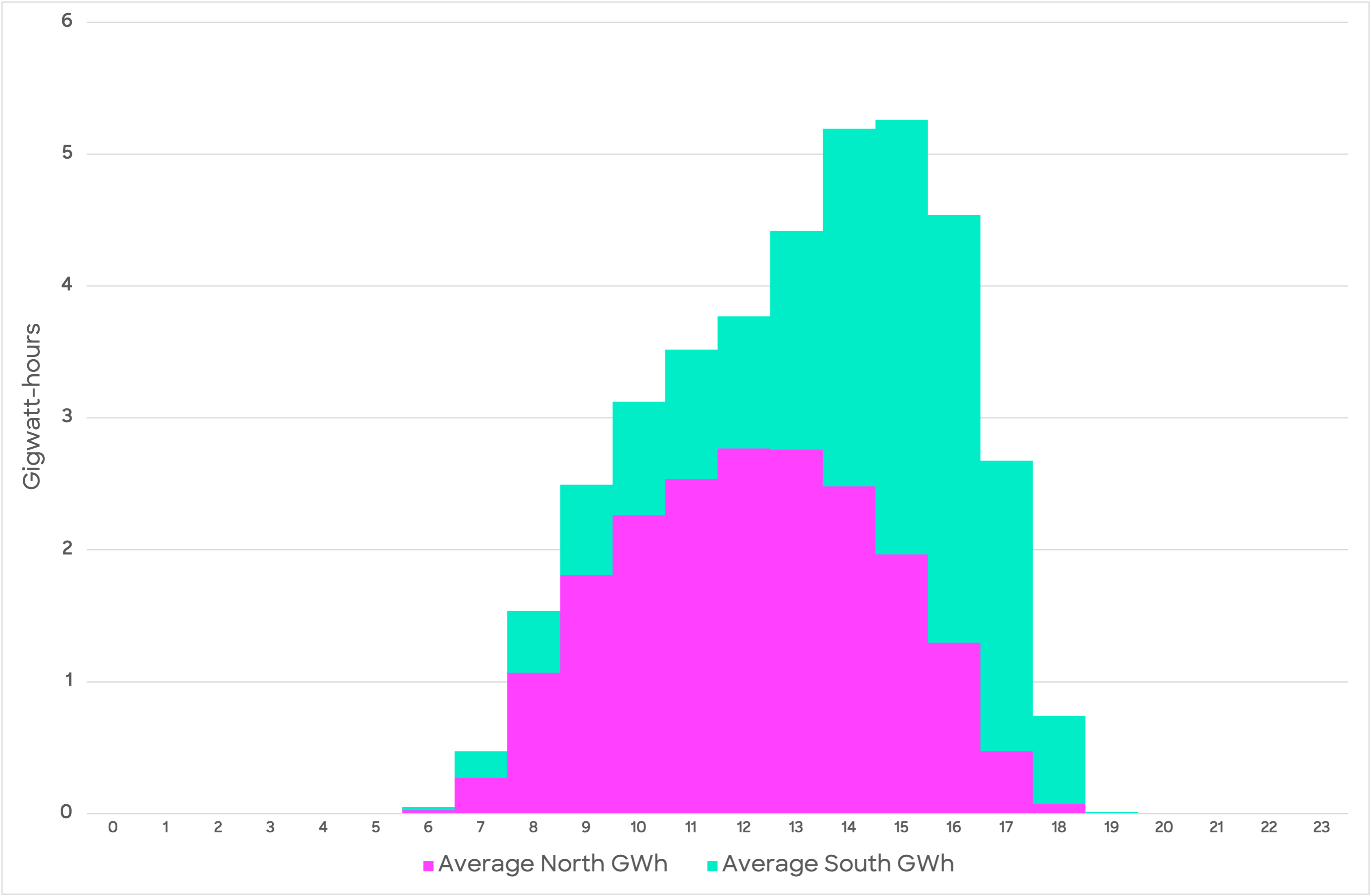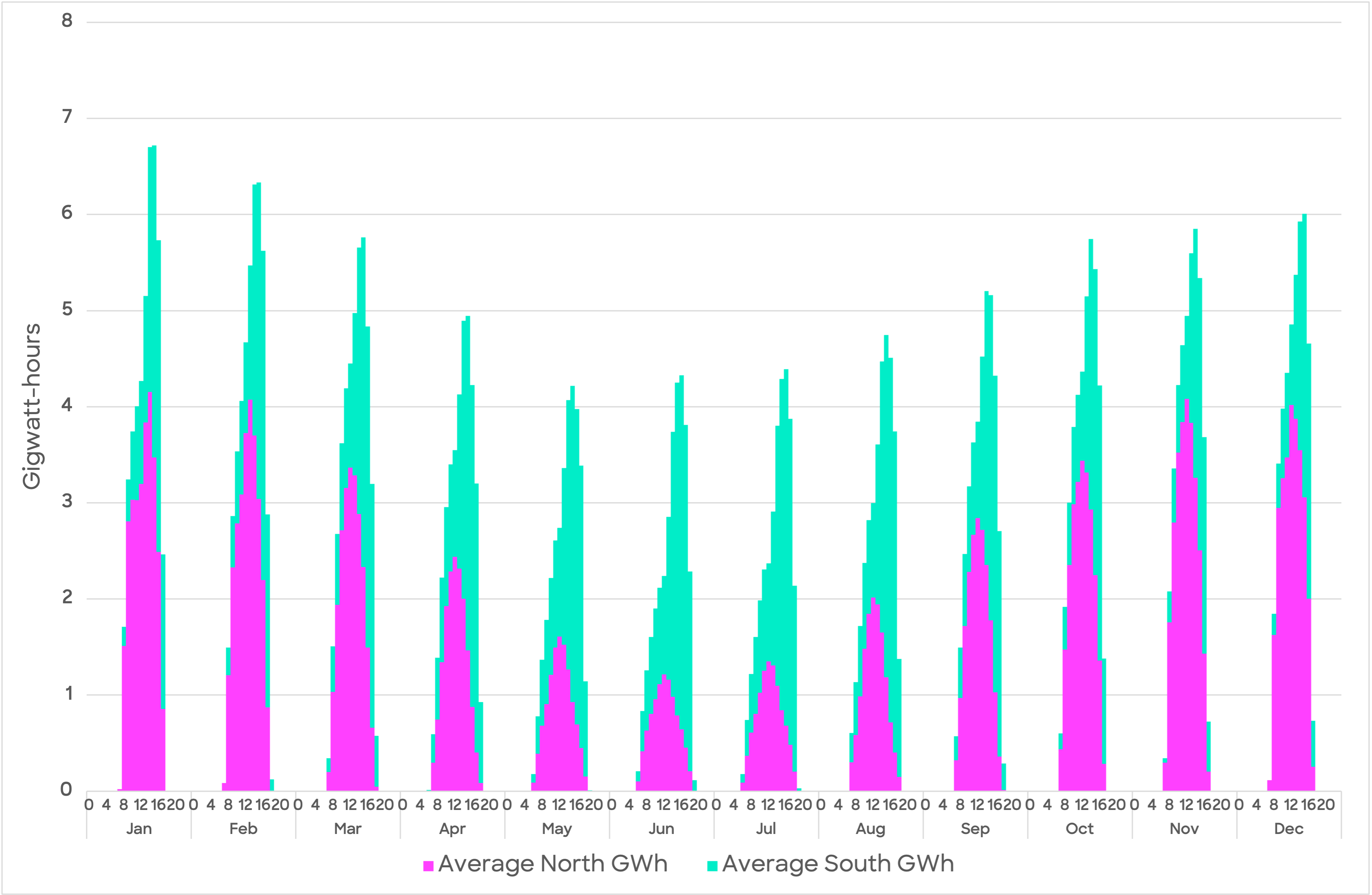Take a look at the 'duck curve' in Australia's electricity demand, driven by increasing rooftop solar installations, and explores its implications for grid stability, pricing dynamics and opportunities for flexible load management.

.png)
NEOM The Line is an inspiring and futuristic city being built in Saudi Arabi that will be an impressive 170km long and 200 meters wide, surrounded by 500m high walls.
These walls are planned to have a mirror-like reflective finish, covering over 170 million square meters of surface area.
Inspired by a recent Gridcog blog on Solar Fences, I wondered about cladding the walls in cheap durable photo-voltaic material (perhaps Cadmium Telluride cells).

If clad in something like a reflective aluminium composite at, say, USD $25 per square meter, the mirrored cladding would have a total cost of around USD $4.25 billion.
While a PV cladding would be more expensive, it might only double the cost of the purely decorative alternative, and could provide cheaper and more diverse energy supply than a more traditional ground-mount solar farm.
Modelling a hypothetical system in Gridcog, we can potentially fit 15GW of PV-capacity on each wall, generating almost 800 Terrawatt-hours of energy over a 30 year life, with zero land-use requirements.
Modelling this system in Gridcog, we can see that the vertical orientation gives us good distribution of energy supply across the day (Figure 1), and good energy production year round, even in Winter (Figure 2).
This diversity of energy production makes balancing the solar output with load flexibility and energy storage more straightforward.


CaTe is a type of thin-film solar cell known for low production costs and good efficiency rates relative to other thin-film technologies. CaTe cells can convert sunlight into electricity with about 15% to 22% efficiency. The manufacturing process is simpler and uses less material than crystalline silicon panels, which contributes to their cost-effectiveness.
CdTe PV might be particularly suitable for cladding kilometer-long city walls in the desert due to relatively low cost, ease of large-scale deployment, and robust performance under high temperatures and sunlight conditions typical of desert environments.
The efficiency and durability in such settings potentially makes CaTe PV panels an attractive alternative to aluminimum cladding material for large-scale structures like the walls of The Line, delivering significant amounts of energy with a relatively low increase in capital costs relative to the purely cosmetic alternative.
Solar PV has has seen multi-decade long exponential trends of improving efficiency, reducing cost, and increasing deployment. Commentators have been predicting saturation of solar for years, and a flattening of these exponential growth curves, but it hasn’t come yet. What if the ‘great flattening’ is still decades away?
In this future it wouldn’t just be the giant city walls of The Line that might be photovolatic, it could be the surfaces of all of our new buildings, vehicles, ships, and planes. The marginal-additional cost of making these surfaces photo-voltaic would be de minimis, and we would be passively generating electricity everywhere, whenever that great fusion reactor in the sky was overhead.
Now that’s an inspiring future.

Take a look at the 'duck curve' in Australia's electricity demand, driven by increasing rooftop solar installations, and explores its implications for grid stability, pricing dynamics and opportunities for flexible load management.


What is a solar fence and how does a solar fence stack up compared to conventional ground-mount solar in London and Sydney?


Our previous post looked at the difference between what a residential solar owner in London might be paid under the various SEG export tariffs and what that energy would be worth on the balancing market.
